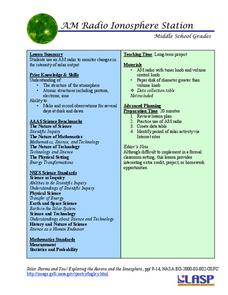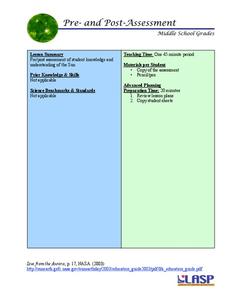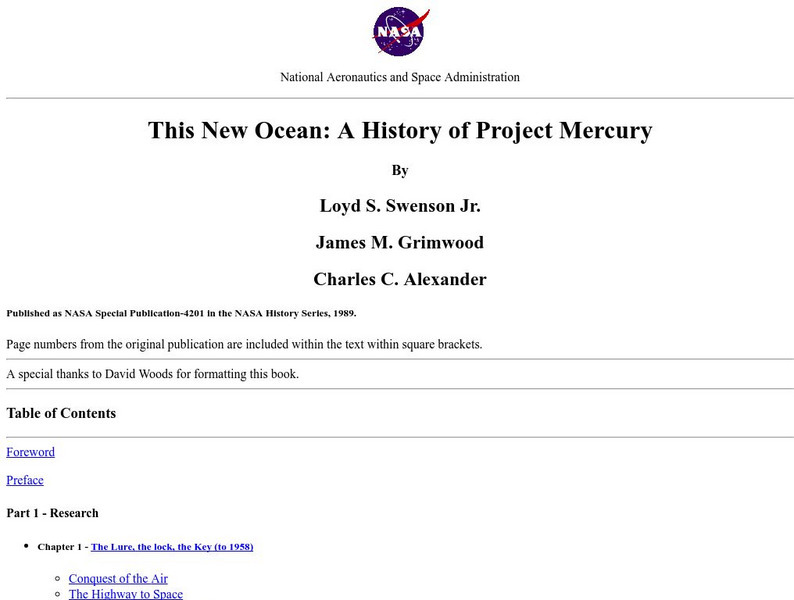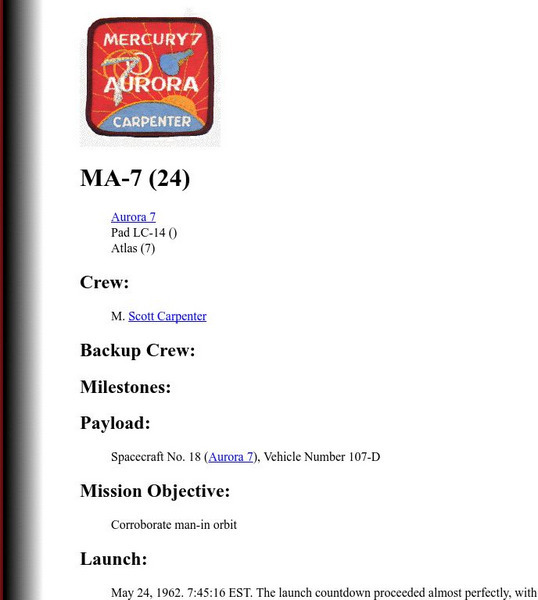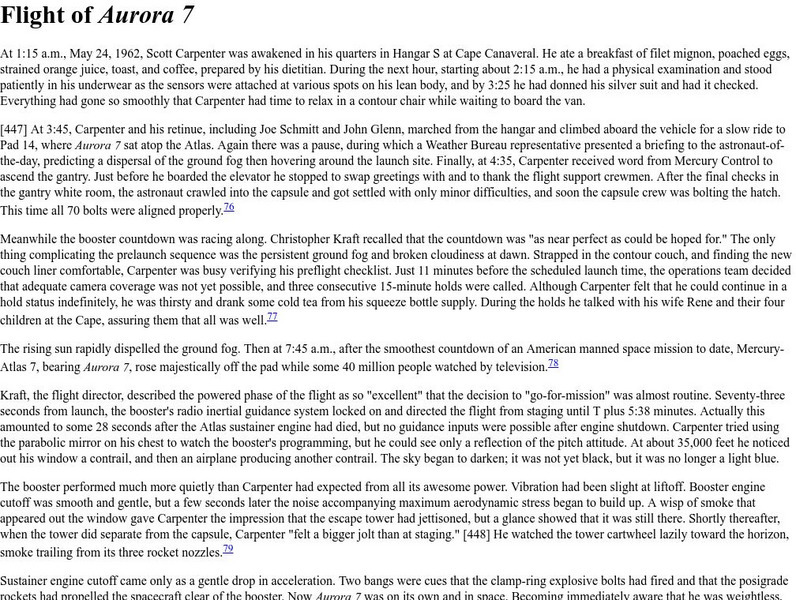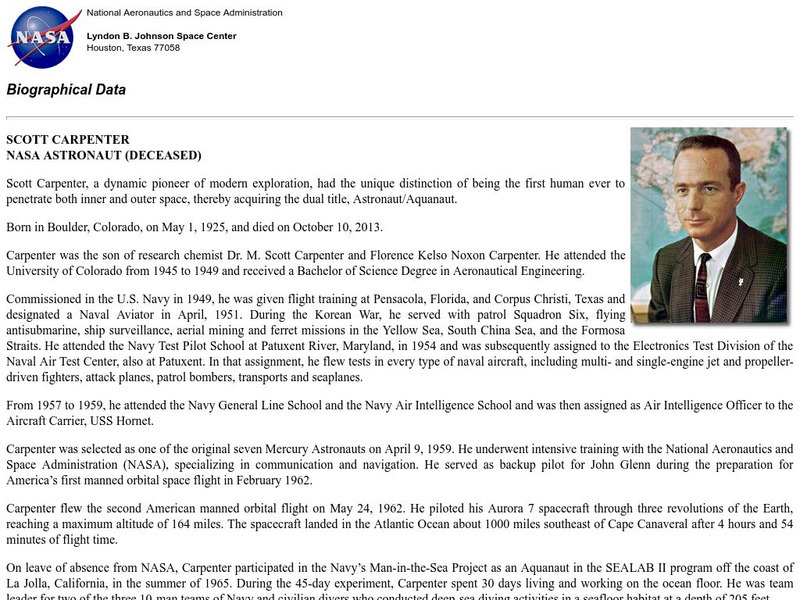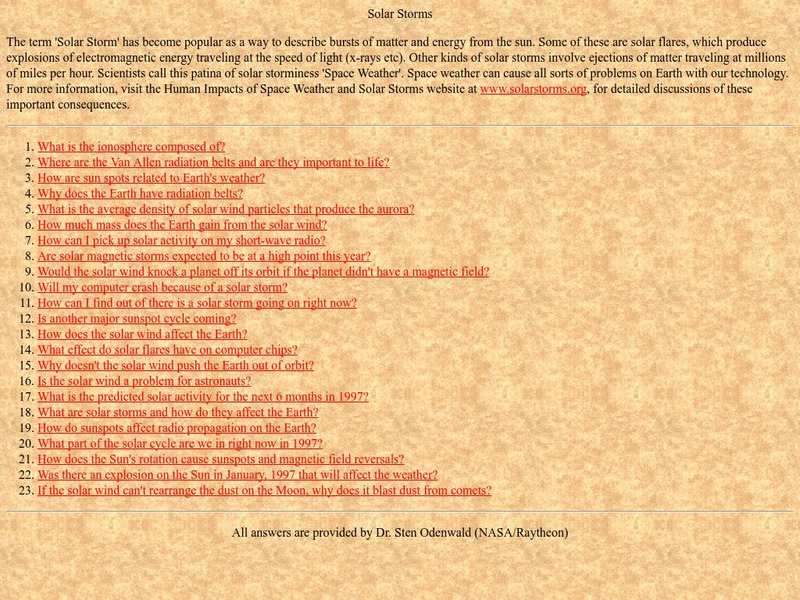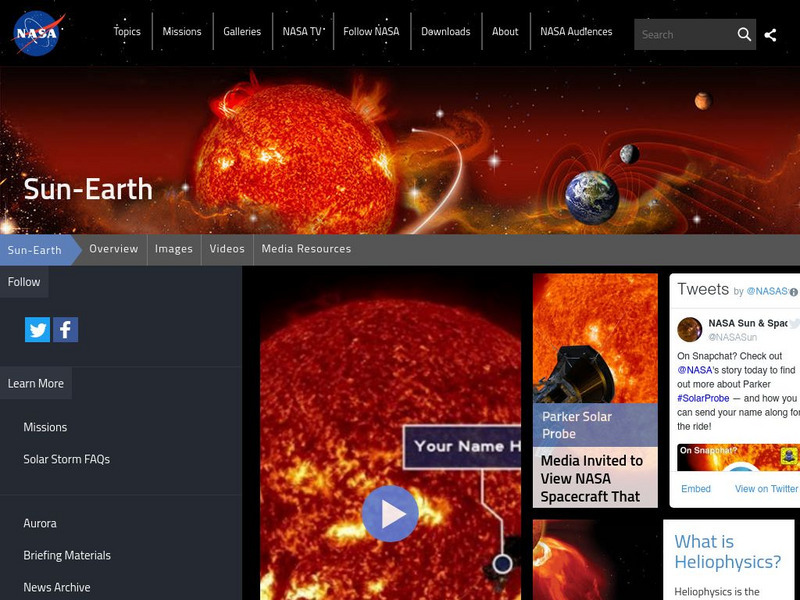Curated OER
The Plasmasphere
For this plasmasphere worksheet, students read about the dilute region of gases 10,000 kilometers above the Earth where atoms are ionized. Students use a photograph taken by the IMAGE EUV instrument to answer 3 questions about the...
PHET
AM Radio Ionosphere Station
Tune in! Young scientists use an AM radio at home to monitor solar output. The long-term project would be ideal in a flipped classroom or as an out-of-class project.
PHET
Mapping the Field of Multiple Dipole Magnets
So you built a magnetometer, now what? High school scientists use their magnetometer made in a previous lesson to map the union of magnetic fields of dipole magnets. They experiment with different alignments and draw conclusions about...
PHET
The Sun: Pre- and Post-Assessment
Want to see how far pupils have come since the beginning of the unit? This activity is designed to be a pre- and post-assessment for a unit on the Sun. The first in a series of 18 that can be combined to form a complete unit. Two...
NASA
Nasa: This New Ocean
This site from NASA contains the text of the book "This New Ocean: A History of Project Mercury" by Loyd S. Swenson Jr., James M. Grimwood, and Charles C. Alexander.
NASA
Nasa Space Place: What Is an Aurora?
Learn about auroras and their causes, and see some auroras caught on camera.
NASA
Nasa: Scott Carpenter Mercury Aurora 7 Summary
NASA mission summary for the Aurora 7 Mercury space mission.
NASA
Nasa: Scott Carpenter the Flight of Aurora 7
This site from NASA provides a detailed description of the flight of Aurora 7 the second manned orbital flight of a Mercury spacecraft.
NASA
Nasa: Astronaut Biography: Scott Carpenter
The numerous accomplishments of astronaut/aquanaut Scott Carpenter are discussed in this biography. The biography details his work with NASA and the U.S. Navy and discusses his life after retirement.
NASA
Nasa: Image Science Center: Ask the Space Scientist Earth
Site from NASA contains a collection of 91 questions pertaining to the Earth's atmosphere, magnetic field, ionosphere, rotation and origin of life.
NASA
Nasa: Heliophysics: New Science of the Sun Solar System Connection
This site from NASA lists common and uncommon misconceptions about Sun-Earth Science. Site also provides links to activities and lesson plans as well as background reading.
NASA
Nasa: Hubble Observations Shed Light on Jupiter Impact
Scientists continue to learn from their observations long after the largest collision in history was recorded. Was Comet SL-9 actually an asteroid? What were the dark impact clouds made of? What were the effects on Jupiter's magnetic field?
NASA
The Earth Sun System
This resource provides some interesting video footage of the Sun. Also included is information about the effects of solar radiation on the Earth's magnetosphere and weather.
Exploratorium
Exploratorium: A Guide to Astronomy Resources
A portal to resources on the sun, the Earth's neighboring planets, and the weather in space. Find out why Saturn is the "jewel of the Solar System" and explore what happens when Venus and Mercury make their rare transits across the sun.



